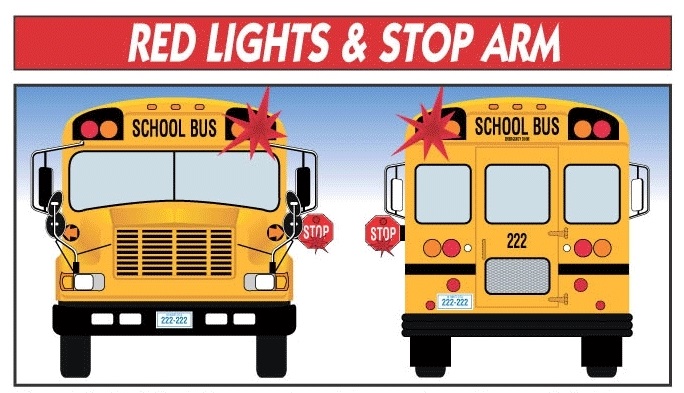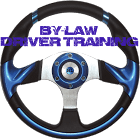
A lot of people don’t seem to understand when or where or if they should be stopping for a school bus. Anytime you are driving and can see a school bus you need to pay attention! Understanding what they are doing and why will help you make the right decision.

Understanding the lights
Understanding the lights on the school bus is essential to knowing what you should be doing.
WARNING LIGHTS

The warning lights are amber in colour and are located at the top of the bus. When engaged, these light will flash intermittently.
A school bus driver activates these lights AT LEAST 100 feet before stopping. When these amber lights flash you should immediately be prepared to stop.
The hazard lights are amber in colour and are located at the bottom of the bus. When engaged, these light will flash simultaneously.
Always use caution when approaching a stopped school bus. When the hazard lights are flashing, you are not required to stop, but, proceed with caution! School buses must use the hazards when they are stopping at railroad crossings, you do NOT have to stop for a bus at a railroad crossing, unless the red flashing lights and stop sign are on.
STOP LIGHTS

The stop lights are red in colour and are located at the top of the bus. When engaged, these light will also flash intermittently. The stop arm/stop sign is on the drivers side of the school bus just behind the drivers window. There may on some buses be an additional stop sign closer to the rear of the bus.
You MUST STOP for a school bus when the red lights and stop sign are flashing. This means that children are getting off, or on, the bus. Stop at least 20 feet from the bus and remain stopped until the lights are turned off.
HAZARD LIGHTS
 The hazard lights are amber in colour and are located at the bottom of the bus. When engaged, these light will flash simultaneously.
The hazard lights are amber in colour and are located at the bottom of the bus. When engaged, these light will flash simultaneously.
Always use caution when approaching a stopped school bus. When the hazard lights are flashing, you are not required to stop, but, proceed with caution! School buses must use the hazards when they are stopping at railroad crossings, you do NOT have to stop for a bus at a railroad crossing, unless the red flashing lights and stop sign are on.
This next image shows you when you do have to stop and when you don’t

On a side note: Bicycles when using roads, MUST abide by the highway traffic act and MUST obey the same rules for the school buses and Stop when lights are flashing.
